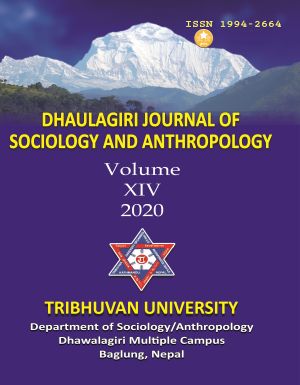Claim and Association of Differently Located Ritual and Political Actors Associated with the Village Shrine among the Rajbansi People of Morang, Nepal
DOI:
https://doi.org/10.3126/dsaj.v14i0.29997Keywords:
dhami, jimdar, Rajbanshi, rivalry, village shrinesAbstract
This paper discusses how differently located ritual actors (Dhami) and socio-political actors or leaders (Jimdar) among the Rajbansi community link or associate themselves with the Maharaj Than to claim or legitimize their ritual and political power what Sherry Ortner (1989) calls it “to gain upper hand” in the Rajbansi society. Because the Maharaj Than possesses ʻa great virtueʼ among the Rajbansi society. Drawing on the ethnographic study of three village shrines of Morang district conducted during 2015-16 among the Rajbanshi. It further discusses how the ritual actors among the Rajbanshi people progressively lost their ritual and spiritual ‘power’ along with the advent of central state’s extractive economic policies, the changed environmental and ecological conditions of the Tarai.




